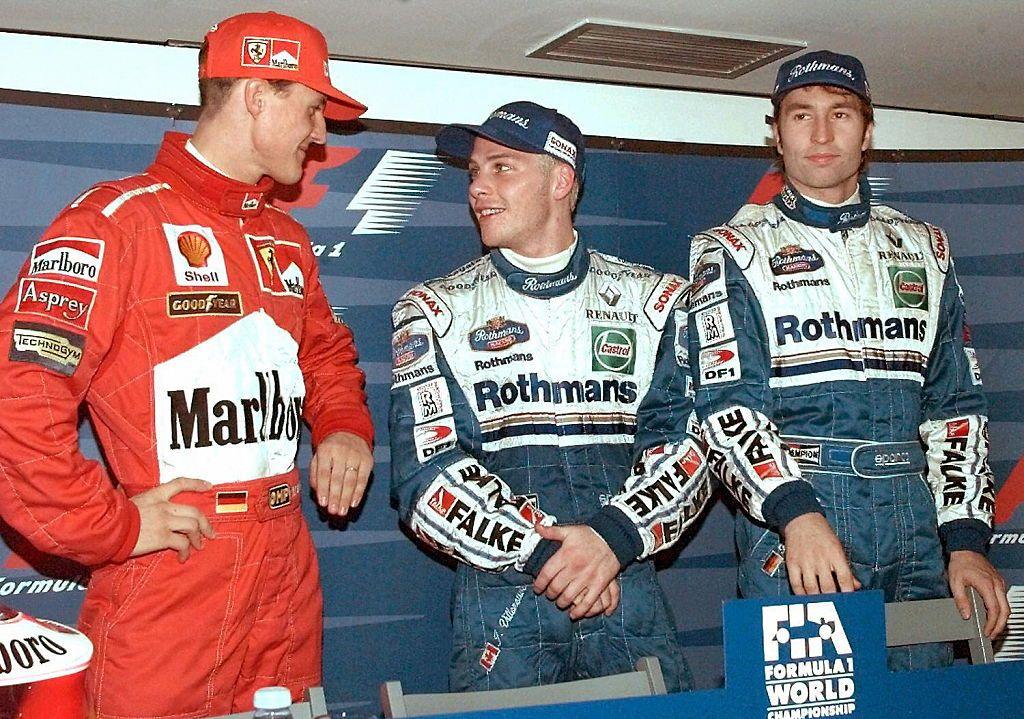How does F1 measure photo finishes?
- Published
Formula 1 measures its lap and race times to three decimal places to ensure that timing is both accurate and easy to understand.
Each decimal place has its own label - tenths, hundredths, and thousandths.
It is very common for lap times in qualifying - when drivers try to set the fastest time possible to give them the best starting position for the grand prix - to be separated by a few thousandths of a second.
At the 2025 Japanese Grand Prix at Suzuka, for example, Max Verstappen qualified fastest by setting a time of one minute, 26 seconds, and 983 milliseconds (1:26.983). Second-place Lando Norris was second with a time of 1:26.995, just 12 thousandths of a second behind.
That gap is around ten times smaller than the average blink of an eye.
What happens if drivers set the same time in F1?

Michael Schumacher, Jacques Villeneuve and Heinz-Harald Frentzen all finished with the same qualifying time in Spain in 1997
In some instances, drivers even set the exact same time to three decimal places. In that case, F1 does not use a fourth decimal place to determine the order. Instead, whichever driver set that lap time first is given priority on the leaderboard.
It is much less common for drivers to finish within a few thousandths of each each other at the end of a race, but in those instances, F1 uses analysis of high-quality, high-speed video footage to determine which car was ahead at the line.
If two cars finish the race with the same time to three decimal places, and video footage also suggests they crossed the line at the exact same point, then the points for both finishing positions are added together, divided by two, and awarded to each driver.
At the 1997 European Grand Prix at Jerez in Spain, Michael Schumacher, Jacques Villeneuve and Heinz-Harald Frentzen all set precisely the same time to three decimal places in qualifying. As Villeneuve set the time first, he qualified on pole position.
How does timing and tracking work in F1?
Every Formula 1 car is fitted with a transponder, a device which emits a constant unique radio signal which allows its movement to be tracked precisely.
Buried in the tarmac of every circuit on the calendar, every 200 metres or so, are a series of timing loops stretching the width of the track. Each of the timing loops is encased in a layer of silicone for durability, and before each grand prix they are tested to ensure they are functioning correctly.
Whenever a car's transponder passes over a timing loop, the exact time is transmitted. Thus, a full picture of its movement and the time the car has taken to travel between two points can be created without any outside interference.
There are multiple backup systems and alternatives in place, including infrared sensors and light beams on the start/finish line, to ensure that timing is always accurate.
This article is the latest from BBC Sport's Ask Me Anything team. The question was sent to us by John in Birmingham. Thanks, John!
Get in touch
Send us your questions